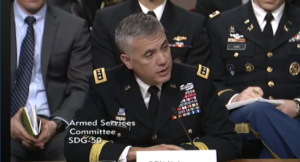
Interagency coordination and engaging forward against U.S. adversaries bent on influencing 2018 congressional elections are ways the federal government will conduct future cyber operations to thwart them from interfering in the U.S., the head of U.S. Cyber Command said on Wednesday. The defending forward approach to cyber security operations stems from the Defense Department’s new cyber posture, which draws from the Trump administration’s to be more proactive in the use of offensive cyber operations. The new approach “allows us to…

 By
By 











